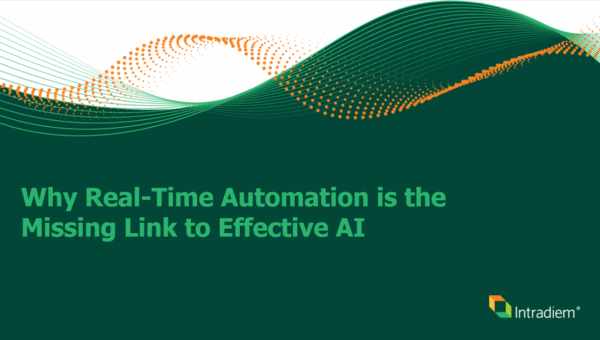
Achieving Digital Transformation Through Workforce Automation
To say that the last two years have been a disruption to just about every industry you can name is, at this point, understating the situation a bit.
Consumer behaviors have been evolving for years, thanks in large part to the emergence of newer and more sophisticated technologies like smartphones and other mobile devices. But the COVID-19 pandemic accelerated things enormously, to the point where organizations of all types are embarking on massive digital transformation efforts to evolve in a way that falls more in line with modern expectations.
Indeed, one recent study indicated that about 63% of business leaders said that the pandemic forced them to begin their own digital transformation far sooner than they’d originally expected. Another study said that 96% of business leaders indicated that the pandemic accelerated their own transformation by an average of about five years.
But what is digital transformation in this context and where do you properly begin? The answers to those questions require you to keep a few key things in mind.
What is Digital Transformation?
At its core, digital transformation refers to the proper integration of digital technology into all areas of a company – not just in the places that have historically used it like human resources or in other administrative areas.
In most situations, this will require a substantial change to how the business operates – which is very much a good thing. Technology like business analytics or the Internet of Things make it easier for employees to do their jobs, which in turn improves the quality of their work. That in turn creates better experiences and delivers more value to consumers, which is really the most important advantage of all.
The process itself can involve a number of steps like upgrading existing technology, replacing older and inefficient legacy systems, or even shifting to new channels by creating mobile experiences that didn’t exist before.
Adopting a new digital transformation-driven model brings with it a number of clear benefits including improving operational efficiency, allowing for a faster time to market for products, improving the quality of those products and more – in addition to positioning organizations to better meet those changing customer expectations. If you’re one of the many about to embark on a digital transformation initiative of your own, workforce automation is absolutely one of the places you should start.
What is Workforce Automation?
As a category of process automation software for customer service teams, workforce automation allows a lot of those important-yet-menial service delivery tasks to be performed automatically, not by human employees, but by intelligent technology. This frees up as much of an employee’s time as possible so that they can focus on higher value tasks that require strategic decision making, or human-centric interactions with customers that require empathy and build meaningful connections between the business and consumer.
In addition to lightening the load of manual tasks for call center workers, workforce automation ensures the right tasks get performed at the right time – both accurately and reliably every single time, thus improving the efficiency of a business’s service delivery operations across the board.. And a contact center runs more efficiently, it often means that its customers have to wait less time to get their issues resolved.
Systems and databases can be integrated together so that when data is entered into one tool, it’s instantly available everywhere.
That last point is particularly important, as it’s what allows businesses to break down a lot of the data silos that formerly existed. When information is trapped in one system or another and is unable to move freely across an enterprise, communication and collaboration become needlessly difficult. Breaking down those silos through automation doesn’t just create a better working environment – it also improves transparency and strategic oversight of that information, too.
In the end, a successful digital transformation is about more than just workforce automation – but automation in and of itself should be one of the starting points on the much larger journey you’re about to embark on.
If you’d like to find out more information about achieving a successful digital transformation through your embrace of workforce automation, download the Forrester Total Economic Impact (TEI) study today.
Back to Blog







